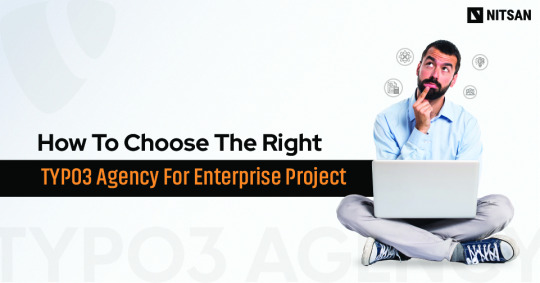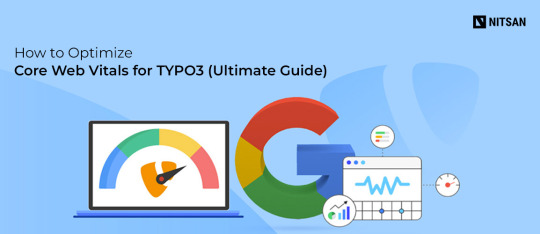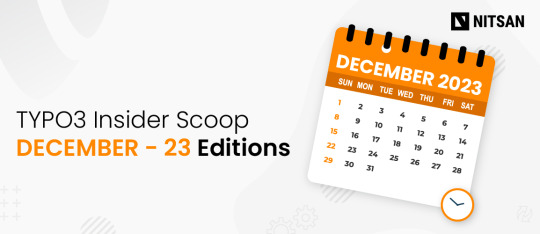Text
Top 25 Tools, Libraries, and Resources for Web Development

Today, the visual appeal and usability of a website take precedence over its development intricacies. Prioritizing a user-friendly and resilient front end is crucial. Thankfully, an array of plugins and frameworks exist in the market, simplifying development processes. These tools offer easy integration and negate the need for in-depth knowledge of specific technologies, ultimately saving valuable time.

ullpage.js: Enables creation of fullscreen scrolling websites and landscape sliders, ideal for One-Pagers.
Owl Carousel: A favorite slider plugin for creating simple sliders with easy integration.
jQuery custom content scroller: Allows customization of scrollbars with vertical and horizontal options, along with different themes.
matchHeight.js: Useful for equalizing heights of columns or floating boxes, especially when using flexboxes.
fancyBox: Popular for image popups with mobile-friendly features and quick setup.
Highcharts: Offers interactive chart creation for various purposes like stocks, timelines, and maps.
Animsition: Provides CSS animated page transitions for smoother reloading experiences.
TwentyTwenty: Allows comparison of two images with a draggable slider, responsive across devices.
Wow.js: Adds cool animations for page scrolling effects.
Dragdealer.js: Enables 2D dragging and tapping functionalities for mouse and touch interactions.
Select2: Replaces select boxes with a customizable jQuery plugin offering features like searching, tagging, and more.
CSS libraries / Design stuff
Animate.css: A CSS animation library.
Flat UI Colors: Offers a selection of trendy colors.
Material Design Lite: Google’s material design framework.
Materialui.co: Provides resources for material design.
Colorrrs: Generates random colors.
CSSpin: Offers a variety of CSS spinners.
Font Awesome: Provides a wide range of icons.
Bootstrap: A popular open-source toolkit for web development.
Foundation: Responsive front-end frameworks for designing websites, apps, and emails.
Interested in delving deeper into these valuable tools and resources for web development? Explore further details and insights by visiting our blog post at: Read more at — https://nitsantech.com/blog/25-useful-tools-libraries-and-resources-for-web-developer
0 notes
Text
Government Site Builder (GSB) and TYPO3

The Government Site Builder (GSB) is a web content management solution utilized by the German federal administration and various government agencies. Initially introduced in 2005, it has evolved over time, with GSB 10 being based on the open-source TYPO3 CMS. GSB 11, set to launch in late 2023, will continue this evolution, leveraging TYPO3’s strengths.
Key points about GSB 11 and TYPO3 include:
GSB 11 will run on TYPO3, providing a seamless transition for government offices currently using GSB 10.
TYPO3 is renowned for its security, reliability, and flexibility, making it an ideal choice for government authorities.
Advantages of TYPO3 include its open-source nature, scalability, flexibility, compliance with regulations, and strong community support.
GSB 11 aims to enhance efficiency, reduce costs, ensure a smooth transition, and offer long-term stability for government websites.
The partnership between GSB 11 and TYPO3 promises improved citizen engagement, accessibility, multilingual support, and integration with social media.
In summary, GSB 11 powered by TYPO3 offers a comprehensive solution for government agencies seeking to build secure, efficient, and citizen-centric websites. This partnership underscores a commitment to delivering transparent and accessible online services to citizens while ensuring long-term viability and cost-effectiveness.
0 notes
Text
Guide to Laravel Development(2024)

In the dynamic realm of development, Laravel stands out as an innovative and efficient tech-stack for web development. This guide explores Laravel’s evolution, features, and its impact on web development.
History of Laravel Framework: Launched in 2011 by Taylor Otwell, Laravel is a PHP-based, open-source web framework following the MVC architecture. Boasting a substantial user base, Laravel integrates front-end and back-end tools, offering a comprehensive development solution.
Top Features of Laravel Framework:
MVC Architectural Pattern: Laravel supports the MVC pattern, enhancing code organization for large projects.
Built-In Template Engine (Blade): Features Blade, a powerful template engine simplifying view creation in Laravel.
Security & Authentication: Prioritizes security with features like XSS protection and secure password hashing.
Symphony — Integrated Mail Services: Seamlessly integrates with SwiftMailer for efficient email management.
Customization Using Artisan Tool: Artisan automates tasks, simplifying code creation, database management, and more.
Eloquent ORM: Intuitive Object-Relational Mapping for developer-friendly database interactions.
Advantages and Disadvantages of Laravel:
Advantages: Large community, seamless exception handling, easy cache integration, automated unit testing, modular libraries, customizable routing, and excellent performance.
Disadvantages: Learning curve for beginners, potential performance overhead, reliance on Composer, extensive ecosystem, and regular updates may pose challenges.
Why Hire Laravel Developers: Hiring Laravel developers offers benefits such as rapid development, scalability, cost-effectiveness, a rich ecosystem, and easy maintenance. Key factors to consider include experience, technical skills, portfolio diversity, problem-solving ability, communication skills, testing expertise, and client reviews.
Conclusion: Laravel, with its continuous upgrades, remains a top choice for developing highly functional web applications. Its features make it appealing to mid-level and large businesses, positioning it as a leading PHP framework for web development. NITSAN is recommended for Laravel and PHP development services.
Read In details Blog at — https://nitsantech.com/blog/laravel-development-the-complete-guide
0 notes
Text
Top Web Development Stacks in 2024

In today’s rapidly evolving technological landscape, new technologies and stacks are introduced at an unprecedented pace. If you find yourself bewildered by the myriad of options, wondering which technology stacks reign supreme in 2024, you’re not alone.
As we stride into 2024, certain stacks, such as MERN Stack and MEAN Stack development, have emerged as the frontrunners, showcasing their prowess and capabilities. Numerous web stacks are poised to become the most popular choices in the IT industry, thanks to their widespread popularity and robust features.
Without further wait, let’s delve into the top and most popular web development stacks in 2024.
What is a Web Development Stack?
A web development stack, also known as a web application stack or solution stack, is the collection of technologies used to build a website or web application. It’s essentially the foundation upon which your website or app is built, and it includes everything from the programming languages and frameworks used to the servers and databases that power it.
Front-end: This is the part of the website that users see and interact with. It includes technologies like HTML, CSS, and JavaScript.
Back-end: This is the part of the website that handles the behind-the-scenes work, such as storing data and processing requests. It includes technologies like programming languages (e.g., Python, PHP, Java), web frameworks (e.g., Django, Rails, Laravel), and databases (e.g., MySQL, PostgreSQL, MongoDB).
What are the Leading Web Stack Technologies in 2024?

The MERN stack is a popular web development stack that consists of four main components: MongoDB, Express.js, React, and Node.js.

MongoDB stands out as a NoSQL database, storing data in documents resembling JSON format. Offering scalability and flexibility, MongoDB efficiently manages substantial data sets. Its document-oriented model facilitates seamless integration with JavaScript and applications based on JSON.
Express.js
Express.js, serving as a backend framework for Node.js, streamlines the process of web application development. It presents a comprehensive array of functionalities for routing, middleware management, and handling requests. Express.js delivers a nimble and adaptable framework, ideal for constructing scalable and efficient APIs.
React js
React, a JavaScript library designed for crafting user interfaces, adopts a component-based architecture empowering developers to fashion reusable UI components. Through React’s virtual DOM, targeted updates are efficiently executed, enhancing performance by focusing solely on the essential parts of the user interface.
Node.js
Node.js is an open-source, cross-platform JavaScript runtime environment that allows developers to execute server-side code using JavaScript. Developed on the V8 JavaScript engine by Google, Node.js enables the execution of JavaScript code outside of a web browser. It is particularly well-suited for building scalable and high-performance network applications, as it utilizes an event-driven, non-blocking I/O model.
What is the Serverless Stack?
A Serverless Stack refers to a set of technologies and services that enable the development and deployment of applications without the need to manage traditional server infrastructure. In a serverless architecture, developers can focus on writing code and building functionalities without concerning themselves with the underlying servers or infrastructure management. The term “serverless” does not mean there are no servers involved; instead, it implies that the responsibility of server management is abstracted away from the developer.
LAMP stack:
What are full form of LAMP stack?Linux, Apache, MySQL, PHP
Linux:
The operating system (OS) on which the other components of the stack run. Linux is chosen for its stability, security, and open-source nature. It provides a robust foundation for hosting web applications.
Apache:
The web server software that serves as the HTTP server for the stack. Apache is highly configurable, reliable, and widely used. It handles incoming web requests, communicates with the application server, and serves static content to users’ browsers.
MySQL:
The relational database management system (RDBMS) used for storing and managing the application’s data. MySQL is known for its speed, reliability, and scalability. It is often used with the Structured Query Language (SQL) for database queries.
PHP:
The scripting language used for server-side web development. PHP is embedded within HTML code and executed on the server, generating dynamic content that is sent to the client’s browser. It is widely used for building web applications and is known for its ease of integration with MySQL.
PERN Stack :
The PERN stack is a software stack that is specifically designed for building web applications. PERN is an acronym representing the four main components of the stack:
PostgreSQL:
The relational database management system (RDBMS) that serves as the data storage layer for PERN applications. PostgreSQL is known for its robustness, extensibility, and support for complex queries. It is a powerful open-source database.
Express.js:
A minimal and flexible Node.js web application framework that serves as the backend (server-side) component of the stack. Express.js simplifies the process of building APIs (Application Programming Interfaces) and handling HTTP requests in Node.js applications.
React:
A JavaScript library for building user interfaces that serves as the frontend (client-side) component of the stack. React is developed and maintained by Facebook and is widely used for creating dynamic and interactive user interfaces in single-page applications.
Node.js:
A JavaScript runtime that allows developers to execute server-side code using JavaScript. Node.js is used as the runtime environment for the Express.js server, allowing for server-side JavaScript execution. It enables building scalable and high-performance network applications.
Ruby on Rails Development
“Ruby on Rails,” often referred to as Rails or RoR, is a web application framework written in the Ruby programming language. Created by David Heinemeier Hansson, Rails follows the principles of convention over configuration (CoC) and don’t repeat yourself (DRY). Released in 2005, Ruby on Rails has gained popularity for its elegant syntax, developer-friendly conventions, and emphasis on productivity.
Conclusion
Choosing the right web development stack for project success in 2024 is critical, impacting aspects ranging from user experience to scalability and maintenance. With no one-size-fits-all solution, it’s essential to recognize each project’s uniqueness, necessitating careful consideration of factors like project requirements, scalability, team expertise, and security. In the dynamic web development landscape, staying informed about emerging trends is vital, enabling adaptability to evolving user needs and technological advancements.
Read More at - https://nitsantech.com/blog/top-web-development-stacks
0 notes
Text
Best Laravel Security Features to Secure Your Application
Let's look into practice in detail to ensure the protection of your application from potential threats.

Keep Everything Updated
Implement Strong Authentication and Strong Security
Setting up proper user input
Prevent Cross-site request forgery (CSRF) attacks to Secure Application
Prevent Xss (Cross Site Scripting)
Use of Content Security Policy (CSP) headers
Secure Your Database
Pro-tips to Secure your Laravel Web Application
Read More: https://nitsantech.com/blog/laravel-security-best-practices
NITSAN #Laravel
0 notes
Text
Creating Custom Content Elements with Mask in TYPO3
In TYPO3, you can create your own custom content elements using masks. These masks let you design content exactly how you want it, whether it's adding images, videos, or organizing information. With masks, you have the freedom to customize your website easily and make it work just the way you need it to.

Getting Started with Mask
New Content Element Wizard
How to Create Fields In Mask?
Table Configuration Array (TCA)
Element Meta Data Tab Using Mask
Read More: https://nitsantech.com/blog/mask-create-custom-content-elements-in-typo3
0 notes
Text
Best TYPO3 Templates in 2024
Looking to refresh your TYPO3 website with a sleek, modern design? Whether you're a business owner, creative professional, or nonprofit organization, these top TYPO3 templates for 2024 offer the perfect starting point for crafting a captivating online presence.

T3 Karma - Truly Multi-Purpose TYPO3 Template
TYPO3 Bootstrap Package
T3 Shop Template (Powered by TYPO3 Aimeos)
Aimeos Web Shop Distribution
T3 Marketing - Multipurpose TYPO3 Agency Template
T3 Rama - Clean Multipurpose TYPO3 Template
T3 Shubh - Startup TYPO3 Template
Multipurpose TYPO3 ReactJs Template - T3 Shiva
T3 Property - A Modern Real Estate Theme
T3 Interior - A Modern Real Estate TYPO3 Template
0 notes
Text
Enterprise TYPO3 Projects: Choose the Right TYPO3 Agency
Selecting the right agency can make all the difference in the success of your TYPO3 project. Here are a few key considerations to help you make the best choice:

Understanding Enterprise Needs
Project Planning and Scope Definition
Establishing Clear Communication Channels
Customization and Integration
Training and Knowledge Transfer
Quality Assurance and Testing
Deployment and Go-Live Strategy
Support and Maintenance
Read More: https://nitsantech.com/blog/typo3-projects-for-enterprises
NITSAN #TYPO3 #TYPO3CMS
0 notes
Text
React JS Benefits - Why choose React.JS Framework
React JS is a JavaScript library for building dynamic user interfaces. It's known for its component-based architecture and efficient virtual DOM, making it a top choice for fast and scalable web development.

Benefits of React JS
Improved User Experience
Declarative Syntax
Virtual DOM
JSX (JavaScript XML)
Reusable Components Saves Time
SEO-Friendly Applications
Active Community Support
Scalability
Flexibility
Speed
Read More: https://nitsantech.com/blog/react-js-benefits
0 notes
Text
TYPO3 v13.0 - What's New in Version 13.0?
TYPO3 has officially announced the initial sprint release for the TYPO3 v13 series. Are you ready to join in the excitement? TYPO3 v13 marks towards the long-term support release in October 2024. This milestone signals TYPO3's progression towards the internationalization of the system.

The first step to long-term support
Platform upgrades and dependencies
Right-to-Left Backend UI
Optional Backend Modules
Backend Entry Point Consolidated
Search Function in the Form Framework
Password Recovery Email
Hotkeys in TYPO3 Backend Modules
New minimum system requirements
Read More: https://nitsantech.com/blog/typo3-v130
0 notes
Text
Why Shopware Is a Perfect Platform To Build Online Store?
In the dynamic realm of online retail, choosing the right platform can make all the difference between a thriving business and one that struggles to keep up. Shopware stands out as an exceptional choice, offering a myriad of features that make it the perfect platform to build and grow your online store.

Intuitive User Experience
Scalability
Versatile Design Options
Robust Marketing Tools
Responsive Mobile Design
Community Support and Extensions
Security and Compliance
Read More: https://nitsantech.com/blog/why-shopware
0 notes
Text
Optimize Core Web Vitals for TYPO3
In today's digital landscape, user satisfaction and search engine rankings are heavily influenced by Core Web Vitals, which focus on three key metrics: Largest Contentful Paint (LCP), First Input Delay (FID), and Cumulative Layout Shift (CLS). By strategically addressing these factors, TYPO3 website owners can significantly improve their site's performance and ensure a seamless browsing experience for visitors.

Tips to Boost Your TYPO3 Performance if Core Web Vitals Don’t Improve
Choose a fast hosting provider
Don’t overlook image optimization
Use only essential and lightweight TYPO3 Extensions
Apply Caching Strategies
Enable Lazy Loading
Minimize CSS and JavaScript
Read More: https://nitsantech.com/blog/typo3-core-web-vitals
0 notes
Text
Top-Rated TYPO3 Templates in year 2024

Are you in search of the best TYPO3 templates? In this guide, we will explore some of the most loved TYPO3 templates that resonate with users of all levels of expertise.
Having developed one of the most successful TYPO3 templates ourselves, we understand the importance of a guide that aligns with quality standards.
One of the pivotal factors in choosing a TYPO3 template is the variety it offers in selection areas such as code quality, features, and future roadmaps.
Without further delay, let’s delve into the realm of the best TYPO3 templates, exploring their unique features and why they stand out in the TYPO3 community.
Discover the cutting-edge TYPO3 templates shaping 2024! From sleek designs to powerful features, these templates redefine website aesthetics and functionality. Explore the top picks for an enhanced TYPO3 experience this year!
2 notes
·
View notes
Text
Laravel Pulse: Performance Monitoring Tool for Laravel Apps

Unleash the power of Laravel Pulse! 🚀 This free, open-source tool offers real-time insights into your Laravel app's performance. Monitor usage, track exceptions, and create custom dashboards. Set to release on Dec 1, 2023. Elevate your web app game!
Read blog here - https://nitsantech.com/blog/laravel-pulse
0 notes
Text
NITSAN's Journey Through 2023: A Year in Review

NITSAN Technologies thrived in 2023, unveiling a new website and hosting the Coding Carnival 2023. With 35+ TYPO3 blogs, 2 new services, and in community participation , NITSAN embraced success. Our dynamic work culture and values, along with social initiatives like 'Nsmile - Joy of Giving' during Diwali, showcased our commitment beyond business. As we welcome 2024, NITSAN is ready for a year of growth, success, and new challenges.
Want to read more glimpse ?
Read Full journey at A Glimpse Back: NITSAN Year in Review 2023
3 notes
·
View notes
Text
TYPO3 v13 Roadmap Announcement -What's Awaits ?

Hello there, lovely TYPO3 enthusiasts! In the previous article, we explored the TYPO3 roadmap for version 13. Doesn't it sound exciting? The announcement is just about to drop, and TYPO3 has four more upcoming releases scheduled for 2024. Want to know more? Keep reading this insightful article.
If there's one thing to highlight about the TYPO3 v13 release series, it would be characterized as "reducing repetitive tasks and streamlining TYPO3 user experience in the backend." It's not just about enhancing the TYPO3 user experience; the main goal of TYPO3 v13 is to improve the TYPO3 backend user experience and streamline recurring actions. This involves introducing frontend presets, improving backend usability, enhancing external system integration, and much more.
In this blog, we will explore the upcoming plans for TYPO3 v13, providing comprehensive insights into what's in store for users in TYPO3 v13.
TYPO3 v13 Roadmap Goals - Making TYPO3 Things Easier Everyone
Frontend Rendering Presets
Based on feedback from the TYPO3 community and numerous discussions at the TYPO3 Conference 2023, TYPO3 has elevated its standards to announce TYPO3 v13. During these conversations, TYPO3 discovered that many users face repetitive challenges in performing certain actions. A primary example is the integrator's focus on creating sites, establishing backend layouts, configuring user permissions, and preparing a new empty TYPO3 instance for TYPO3 editors.
To address this issue, TYPO3 plans to simplify these processes and minimize the daily efforts required by users in TYPO3 v13. TYPO3 also aims to make these processes configurable and duplicatable for integrators. Additionally, the implementation of import and export functions, along with an improved duplication process for content options, is on the agenda.
Enhancing Backend User Experience and Accessibility
TYPO3 continuously works on updating the TYPO3 backend with the latest trending technologies and implementing user requirements in the best possible way. TYPO3 v12 LTS is already equipped with extensive features in this regard. To meet and exceed the strict requirements of the public sector, TYPO3 will continue to implement new modernized techniques in the backend..
Upcoming Goals of TYPO3 v13
The upcoming plans for TYPO3 v13 include external system integrations, simplified workspaces, and improvements in image rendering and content blocks.
Required Database Compatibility
MySQL version 8.0.17 or higher
MariaDB version 10.4.3 or higher
PostgreSQL version 10.0 or higher
SQLite version 3.8.3 or higher
Support Timeline:
TYPO3 will now support each TYPO3 Sprint Release, including (TYPO3 v13.0 and TYPO3 v13.3), until the next minor version is published. TYPO3 v13 LTS will receive fixes until April 30, 2026.
Upcoming Plans for TYPO3 v13:
We will keep an eye on the release of TYPO3 v13 in January 2024. Initially, the release will follow new standard practices, including the removal of outdated components and APIs. Until See you Soon .. Happy TYPO3 reading !
3 notes
·
View notes
Text
TYPO3 Insider Scoop - 2023 December Edition
What an incredible year 2023 was! From the 25th-anniversary celebrations to the TYPO3 v12 release party, TYPO3 Conference 2023, and T3DD23 – it has been remarkable for the TYPO3 Community. Cheers to another year of collaboration, celebration, innovations, and excellence.

Recently, TYPO3 announced the latest TYPO3 V13 update, featuring new features, enhancements, and security updates. The main goal of TYPO3 v13 is to enhance the user experience in TYPO3 Backend, streamlining recurring actions. This version introduces frontend presets, backend usability, external system integration, and more.
Shutdown of Pootle Translation Server:
In the last year, TYPO3 announced the big news of shutting down Pootle Translation Server for TYPO3, replaced by Crowdin. Pootle server initially shut down on May 2, 2023. TYPO3 users faced challenges migrating to Crowdin, but TYPO3 shared guidance on migrating to the new server.
Recap of TYPO3 Conference 2023:
After four long-awaited years, TYPO3 announced hosting TYPO3 Conference 2023 in Düsseldorf. Highlights included keynotes from Nicolas Janni, podium discussions on AI & Content, and the much-awaited TYPO3 Gala award nights, making 2023 a memorable year.
TYPO3 Developer Days 2024:
Former PR officer Luana Valentini announced important dates for TYPO3 Developer Days (T3DD24) and TYPO3 Conference 2024 (T3CON24). T3CON24 introduced a Special Focus Day for the Public Sector and Higher Education on November 27th, showcasing TYPO3's impact in government projects and education.
Update of EU’s Cyber Resilience Act:
The European Union is progressing on the CRA act, involving stakeholders, including TYPO3 and other open-source software projects.
TYPO3 Extension Visibility with Packagist Integration:
This article covers challenges in extension discovery, the dual publishing dilemma, TER solutions, an inclusive approach, and the future enhancement of TYPO3.
Conclusion:
As we conclude this last month of 2023, from our journey through the TYPO3 universe, we will provide more in-depth news and insights from the TYPO3 Community for our readers.
Until I see you all next time !
Want to in-depth News from the TYPO3 Community — Read More !
3 notes
·
View notes